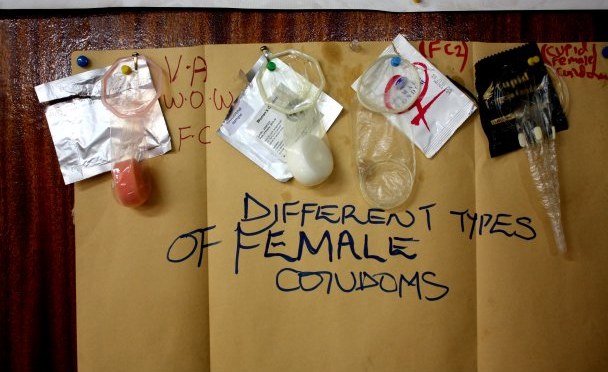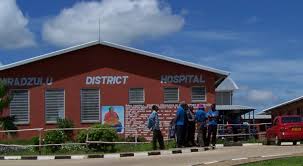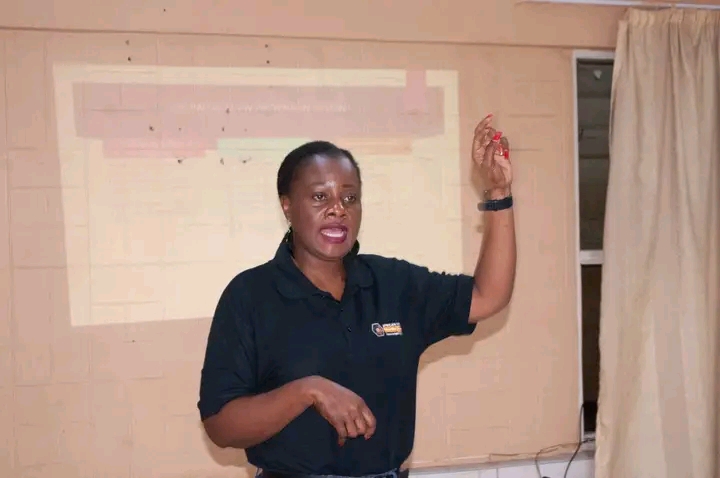By Thumbiko Nyirongo, Contributor

Malawi launched female condoms (FC) in 2008 with high hopes that they would empower women to have more control in their sexual relationships and provide better protection against sexually transmitted infections (STIs), including HIV/AIDS.
Evidence suggests that condoms have averted over 100 million infections globally since the onset of the HIV epidemic, with over 117,000 infections prevented in Malawi between 2010 and 2022, according to the Goals Model 2023.
However, 16 years later, female condom usage remains a distant goal in Malawi. Their uptake among sexually active women and girls remains relatively low, putting them at high risk of contracting STIs and experiencing unplanned pregnancies.
For instance, Chiradzulu District Health Office’s Condom Distribution Officer, Glory Shaba, revealed that female condoms at health facilities often expire before being used.
According to Shaba, many women are reluctant to collect them from health centers and distribution points across the district.

The female condom is the only woman-initiated option that offers triple protection against unintended pregnancy, HIV, and other STIs.
However, historically, it has been underfunded and underutilized, caught in a cycle of limited promotion, low demand, restricted availability, and higher manufacturing costs compared to other contraceptive methods.
In a random interview with the publication, most sexually active women and girls in Chiradzulu indicated that they had never used or even seen a female condom. More shockingly, many had never even heard of it.
Charity Ching’ombe, a 34-year-old woman from Masanjala Village, Traditional Authority (TA) Kadawere, is among those who have never encountered a female condom.
“Kondomu ya chizimayi? (A female condom?) I have never seen one before,” said Charity, adding that it is her sexual partner who decides whether to use protection. “My partner decides. I can’t tell him to use a condom or not.”
Rebecca Phiri (not her real name), a student from one of the schools in the district, said she stopped using female condoms because her sexual partners complained that they were “noisy during intercourse.”
However, Annie Mangwaya, a female condom ambassador from M’jagaja Village in TA Chatera, Chiradzulu, and a seasoned village marriage counselor, uses them with her husband and encourages other couples to do the same.
Mangwaya, who educates women on female condoms in community gatherings, strongly believes that civic education and outreach campaigns can help increase uptake.
“Women need to be told how to use and where to access female condoms. They should receive the same publicity as male condoms,” said Mangwaya.
However, she admitted that she and her husband sometimes opt for male condoms because they are more readily available.

Francis Mabedi, HIV Prevention and Management Officer for the National AIDS Commission (NAC), attributes the low uptake of female condoms to inadequate information.
“The number of female condoms being distributed in the country is less than 5%. This means they are not being issued at the same rate as male condoms, which are both freely available and sold. This is largely due to insufficient information about their benefits and usage,” said Mabedi.
Despite various campaigns promoting female condoms, a spot check in shops and clinics in both Chiradzulu and Blantyre revealed that female condoms remain scarce. Most stores and pharmacies only stock male condoms.
HIV advocate and CHOICE Manifesto campaigner Ulanda Mtamba agrees that access to female condoms remains a challenge in Malawi- and other countries in southern Africa.
“Limited access to condoms facilitates new infections that could have been prevented. Condoms are not reaching the last mile—the people and places that need them the most,” said Mtamba.
The Revised and Extended National Strategic Plan for HIV and AIDS 2023-2027 aims to reduce annual new HIV infections in Malawi from 15,000 in 2023 to 7,700 in 202; and according to Mtamba, condom use can play a significant role in achieving this target.
“The use of male and female condoms and lubricants is one of the most cost-effective interventions to reduce new HIV infections, STIs, and unplanned pregnancies. Ensuring widespread access and promoting condom use will significantly curb new HIV infections.

“Yet, previous surveys have shown low condom coverage among people engaging in high-risk sex. Inadequate and inconsistent condom supply is a major contributing factor to this challenge,” Mtamba added.
In 2022, according to the Malawi Population-based HIV Impact Assessment 2020-2021 (MPHIA 2020-2021), only 107 million male condoms and 268,000 female condoms were distributed nationwide, falling short of the national target of 155 million.
The billion-dollar question remains: How can Malawi embrace female condoms?
Mtamba believes that increased investment in female condom programs is the only viable solution.
“We need to strengthen the capacity of local stakeholders to implement condom-specific programs, adequately fund them, and raise awareness through mass media, online campaigns, and other outreach efforts,” she suggested.
Malawi remains one of the countries with the highest rates of new HIV infections annually.
In 2023, new infections stood at 15,000, after missing the 2020 target of 11,000. Without urgent interventions, the struggle against HIV/AIDS remains far from over.


